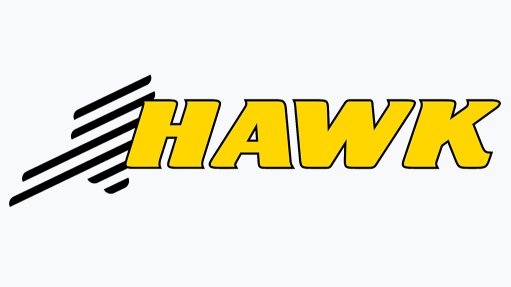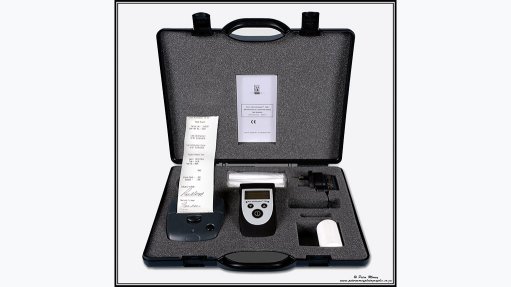Furnace adaptation can greatly reduce emissions
Researchers from the University of Birmingham, in the UK, have designed a novel adaptation for existing iron and steel furnaces that could reduce carbon dioxide (CO2) emissions from the steelmaking industry by nearly 90%.
This radical reduction is achieved through a ‘closed loop’ carbon recycling system, which could replace 90% of the coke typically used in current blast furnace-basic oxygen furnace systems and produce oxygen as a by-product.
Devised by Professor Yulong Ding and Dr Harriet Kildahl from the University of Birmingham’sSchool of Chemical Engineering, the system is detailed in apaper published in the Journal of Cleaner Production.
The paper shows that if implemented in the UK alone, it could deliver cost savings of £1.28-billion in five years while reducing overall UK emissions by 2.9%.
Ding says that current proposals for decarbonising the steel sector rely on phasing out existing plants and introducing electric arc furnaces powered by renewable electricity.
However, an electric arc furnace plant can cost over £1-billion to build, which makes this switch economically unfeasible in the time remaining to meet the Paris Climate Agreement.
“The system we are proposing can be retrofitted to existing plants, which reduces the risk of stranded assets, and both the reduction in CO2, and the cost savings, are seen immediately,” he says.
The novel recycling system captures the CO2 from the top gas and reduces it to CO using a crystalline mineral lattice known as a ‘perovskite’ material.
The material was chosen as the reactions take place at temperatures ranging between 700 ºC and 800 ºC that can be powered by renewable energy sources and/or generated using heat exchangers connected to the blast furnaces.
Most of the world’s steel is produced by blast furnaces which produce iron from iron-ore and basic oxygen furnaces which turn that iron into steel.
The process is inherently carbon intensive, using metallurgical coke produced by destructive distillation of coal in a coke oven, which reacts with the oxygen in the hot air blast to produce carbon monoxide.
This reacts with the iron-ore in the furnace to produce CO2.
The top gas from the furnace contains mainly nitrogen, CO and CO2 which is burned to raise the air blast temperature up to 1 200 °C to 1 350 °C in a hot stove before being blown to the furnace, with the CO2 and N2 – also containing NOx – emitted to the environment.
Under a high concentration of CO2 the perovskite splits CO2 into oxygen, which is absorbed into the lattice, and CO, which is fed back into the blast furnace.
The perovskite can be regenerated to its original form in a chemical reaction that takes place in a low oxygen environment.
The oxygen produced can be used in the basic oxygen furnace to produce steel.
The new system can be retrofitted to existing furnaces, with the addition of an array of additional gas separators and heat exchangers required to support the perovskite splitter.
Iron and steelmaking is the biggest emitter of CO2 of all foundation industrial sectors, accounting for 9% of global emissions.
According to the International Renewable Energy Agency it must achieve a 90% reduction in emissions by 2050 to limit global warming to 1.5 ºC above preindustrial levels.
University of Birmingham Enterprise has filed a patent application covering the system and its use in metal production and is looking for long-term partners to participate in pilot studies, deliver this technology to existing infrastructure, or collaborate on further research to develop the system.
Article Enquiry
Email Article
Save Article
Feedback
To advertise email advertising@creamermedia.co.za or click here
Comments
Announcements
What's On
Subscribe to improve your user experience...
Option 1 (equivalent of R125 a month):
Receive a weekly copy of Creamer Media's Engineering News & Mining Weekly magazine
(print copy for those in South Africa and e-magazine for those outside of South Africa)
Receive daily email newsletters
Access to full search results
Access archive of magazine back copies
Access to Projects in Progress
Access to ONE Research Report of your choice in PDF format
Option 2 (equivalent of R375 a month):
All benefits from Option 1
PLUS
Access to Creamer Media's Research Channel Africa for ALL Research Reports, in PDF format, on various industrial and mining sectors
including Electricity; Water; Energy Transition; Hydrogen; Roads, Rail and Ports; Coal; Gold; Platinum; Battery Metals; etc.
Already a subscriber?
Forgotten your password?
Receive weekly copy of Creamer Media's Engineering News & Mining Weekly magazine (print copy for those in South Africa and e-magazine for those outside of South Africa)
➕
Recieve daily email newsletters
➕
Access to full search results
➕
Access archive of magazine back copies
➕
Access to Projects in Progress
➕
Access to ONE Research Report of your choice in PDF format
RESEARCH CHANNEL AFRICA
R4500 (equivalent of R375 a month)
SUBSCRIBEAll benefits from Option 1
➕
Access to Creamer Media's Research Channel Africa for ALL Research Reports on various industrial and mining sectors, in PDF format, including on:
Electricity
➕
Water
➕
Energy Transition
➕
Hydrogen
➕
Roads, Rail and Ports
➕
Coal
➕
Gold
➕
Platinum
➕
Battery Metals
➕
etc.
Receive all benefits from Option 1 or Option 2 delivered to numerous people at your company
➕
Multiple User names and Passwords for simultaneous log-ins
➕
Intranet integration access to all in your organisation














